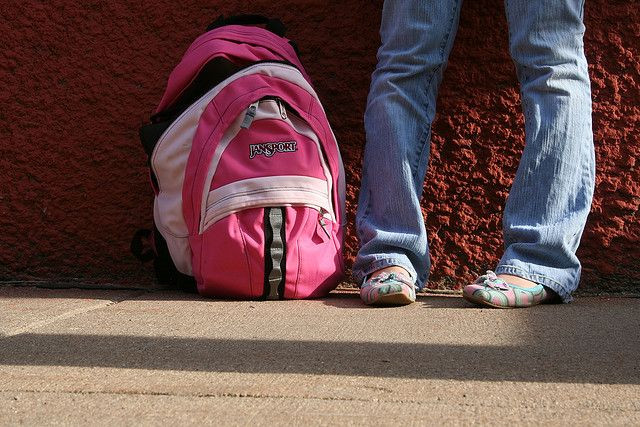Small School Desks, Oversize Backpacks To Blame For Back Pain In Middle School Children

Do you remember being in middle school, just starting to go through puberty, and your growth spurt caused you to be too big for your desk? What about when you teacher asked you to bring in all those textbooks for the day? These factors are putting a strain on school children’s backs, a new study says, and it could have implications for back problems later in life.
A team of researchers, led by Ana Assunção, of the Biomechanics and Functional Morphology Laboratory of the University of Lisbon, in Portugal, studied 138 adolescents, ages 12 to 15. They compared the students’ body sizes to their school’s furniture dimensions and the weight of their backpacks.
Almost two-thirds of the children reported back pain, for which the researchers found could be partially attributed to the large difference between desk height and elbow height. Differences in desk height also affected 59 percent of girls compared to 47 percent of boys. “These results highlight the importance to study the school environment to establish preventative programs for back pain in youths,” the researchers wrote, according to a statement.
Reports of back and neck pain, and headaches, have increased in recent decades, the researcher said and these results don’t only apply to Portuguese children either. According to the U.S. Product Safety Commission, backpack-related injuries send about 5,000 children to the emergency room, and more than 14,000 are treated for injuries each year, Knox News reported.
The researchers didn’t place the blame solely on backpacks and low desks, however, saying that other factors, such as age, family clinical history, injury, gender, lifestyle, sport, stress, and anxiety could also have a role. They advised “promoting healthy lifestyles in what concerns physical activity and a balanced nutrition” because so much of a student’s time is spent sitting in their ergonomically unfit desk rather than getting enough daily physical activity.
The Center for Disease Control and Prevention’s (CDC) 2008 Physical Activity Guidelines for Americans recommends that children get at least one hour of physical activity each day, with most of it being either moderate of vigorous intensity. The CDC also recommends bone and muscle strengthening exercises at least three days a week as well. These can include everything from jumping rope to swinging on playground bars to riding bicycles.
If you feel that your child’s bag may be too heavy, you can find some tips to help them lighten the load here.
Source: Assunção A, Carnide F, Vieira F, et al. Mismatch of school furniture and back pain in adolescents with different maturation levels. Journal of Human Factors and Economics. 2013.
Published by Medicaldaily.com



























